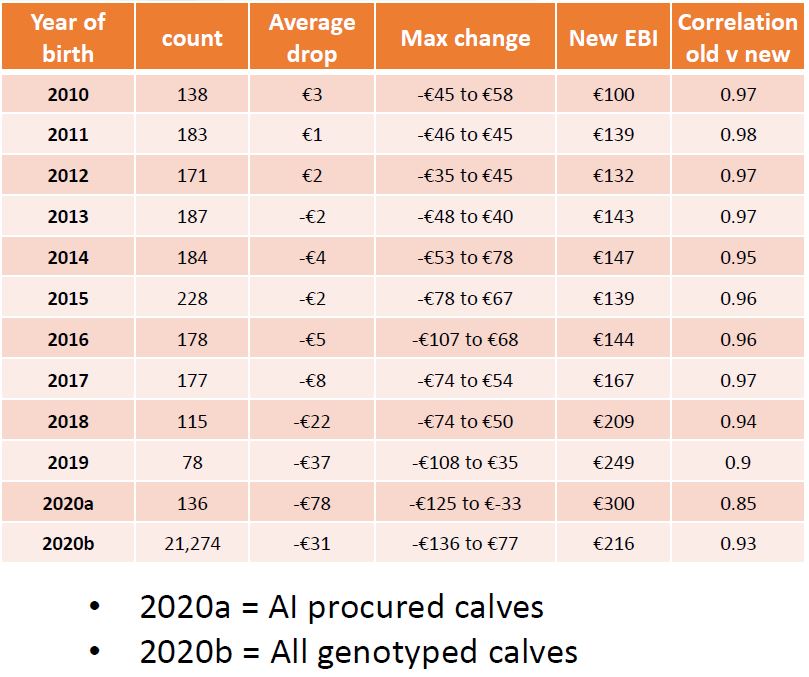ICBF’s Kevin Downing is joined by Professor Donagh Berry, head of quantitative genetics at Teagasc and Dr. Ross Evans who manages the genetics team within ICBF to discuss some of the challenges and changes coming around dairy genomics. Genomics essentially is a tool that allows us to more accurately predict an animal’s performance at an earlier stage. So, it is like adding more pieces to an incomplete jigsaw. While there are many benefits to genotyping and genomics, there are also plenty of challenges. Below, we discuss one of these challenges revolving around prediction bias, how it is affecting the EBI and we also outline the planned changes being implemented to next October’s proof run to correct this bias.
Prediction Bias is a common experience internationally
Professor Donagh Berry provides us with an international perspective on how prediction bias is a common experience and how this is being addressed in other countries.
- Genomics is making even traditional evaluations more precise (simply by verifying the pedigree – parentage verification)
- Provides more information that just genomic EBIs (parentage verification, traceability, identification of lethal recessive mutations etc.)
- Bias was always an issue – There were adjustments made to milk traits as early as 2013 for bias
- Other countries are now applying a shrinkage factor mostly on a trait by trait basis to correct for bias
What ICBF are doing about this Prediction Bias
Dr. Ross Evans outlines the work that ICBF is currently doing about this prediction bias and how it will impact the EBI evaluations next October.
- Internationally recognised validation tests applied to Irish data show that genomics outperforms conventional parental average predictions
- As the adoption of the technology has grown over years overprediction has become a bigger issue
- Solution being applied is published and implemented in the largest genomic evaluation in the world (US)
- Changes will be implemented in the October evaluation run (6th October)
Solution being implemented
- Applied in US genomic evaluations
- Involves identifying the optimum weighting between genomic
component and the parental average in order to:
– Maximise the prediction accuracy (correlation described earlier)
– Minimise the over prediction.
– Each trait potentially has a different optimum
~Milk traits: max weighting is 70% on pure genomic component
~Fertility traits: max weighting is 50% on pure genomic component
~Health (SCC): max weighting is 90% on pure genomic component
~Calving already implemented since Spring 2020 - Weightings will be reviewed annually.
Impact on AI Sires and Genotyped Calves

Link to presentations:
Professor Donagh Berry – Animal genomics in breeding –opportunities and challenges
Dr. Ross Evans – Addressing over-prediction in ICBF dairy genomic evaluations
